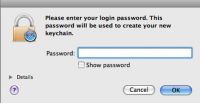-
Bangladesh central bank governor resigns after discovery of $81 million cybertheft
Bangladesh’s central bank governor, Atiur Rahman, resigned on Tuesday after $81 million was stolen from the bank’s account at the Federal Reserve Bank of New York. It was one of the largest cyber-heists in history. The Bangladesh central bank said that the hackers had tried to withdraw $951 million from its account at the Federal Reserve Bank of New York, but the other transactions were blocked after a typo in one of the instructions raised alarms.
-
-
Nations ranked on vulnerability to cyberattacks

Damaging cyberattacks on a global scale continue to surface every day. Some nations are better prepared than others to deal with online threats from criminals, terrorists, and rogue nations. Data-mining experts ranked the vulnerability of forty-four nations to cyberattacks. The United States ranked 11th safest, while several Scandinavian countries (Denmark, Norway, and Finland) ranked the safest.
-
-
How organizations can secure their teleworkers, data
As the number of employees who telework trends upward — and new kinds of devices are used in telework — the National Institute of Standards and Technology (NIST) says it is updating its guidance to include the latest technology available to strengthen an organization’s remote-access data security.
-
-
U.S. files case against Iranian government hackers behind attack on N.Y. dam

In 2013 hackers infiltrated the operations center for the Bowman Avenue Dam, a small dam on Blind Brook in Rye Brook, New York. DHS, in a classified report, later identified the attackers r identified the attackers as the same Iranian group responsible for attacks on PNC Financial Services Group, SunTrust, and Capital One Financial. Now the Department of Justice is set to file an indictment against the Iranian hackers behind the intrusion.
-
-
Doodling trumps text passwords for smartphone security

Someday soon, you may be able to log into your smartphone with sweeping gestures or doodling, using one or more fingers. Researchers have performed the first study of free-form gesture passwords for smartphones in the field. Free-form gesture passwords allow people to draw a password of any shape with any number of fingers.
-
-
ISIS hackers post N.J. police officers’ details online, calling on followers to attack them

ISIS hackers have posted the personal details of U.S. officials online, encouraging the group’s supporters to carry out “lone wolf” attacks against them. The Caliphate Cyber Army (CCA), formerly known as the Islamic Cyber Army, posted the personal details of fifty-five New Jersey police officers last week after hacking into the Web site of the New Jersey Transit police.
-
-
New vulnerability discovered in Open SSL, a common encryption protection package

One of the world’s most common security software packages — used as the basis of protection for many Web browsers — has been found to be vulnerable to a specific form of attack, according to new research. Researchers have discovered that OpenSSL is vulnerable to a type of attack known as a “side channel attack.”
-
-
Web security protocol TLS compromised

In one third of all servers, the security protocol TLS and encrypted data transfer can be compromised. All types of online communication that deal with sensitive data are affected. The researchers discovered the flaw by launching a DROWN (Decrypting RSA with Obsolete and Weakened eNcryption) attack – which they will demonstrate and discuss at a forthcoming security conference in Germany.
-
-
App warns users when they are about to give away sensitive information online
Researchers are seeing potential in a software application which could effectively warn users when they are about to give away sensitive personal information online. The eye tracker detects where a user’s eyes are at the computer screen and records how long they gazed at that spot. The app uses these two functions to find when a user’s eyes remain on a request for sensitive personal information.
-
-
Smartphones now account for 60% of infections in the mobile network
Nokia Security Center Berlin the other day released research findings showing that in the mobile networks, smartphones pulled ahead of Windows-based computers and laptops, now accounting for 60 percent of the malware activity observed in the mobile space. The Nokia Threat Intelligence Report also reveals an increase in iOS-based malware, growing sophistication of Android malware and the rising threat of mobile ransomware.
-
-
Using device “fingerprints” to protect power grid, industrial systems

Human voices are individually recognizable because they are generated by the unique components of each person’s voice box, pharynx, esophagus and other physical structures. Researchers are using the same principle to identify devices on electrical grid control networks, using their unique electronic “voices” — fingerprints produced by the devices’ individual physical characteristics — to determine which signals are legitimate and which signals might be from attackers. A similar approach could also be used to protect networked industrial control systems in oil and gas refineries, manufacturing facilities, wastewater treatment plants and other critical industrial systems.
-
-
In FBI versus Apple, government strengthened tech’s hand on privacy
The ongoing fight between Apple and the FBI over breaking into the iPhone maker’s encryption system to access a person’s data is becoming an increasingly challenging legal issue. This case is very specific, and in this narrow case, Apple and law enforcement agencies will likely find a compromise. However, this question is not going away anywhere. With the “Internet of things” touted as the next big revolution, more and more devices will capture our very personal data – including our conversations. This case could be a precedent-setting event that can reshape how our data are stored and managed in the future.
-
-
Hackers hold hospitals’ medical data hostage
Hackers attacked several hospitals in Germany with ransomware – locking medical files and demanding ransom payment for releasing the encrypted data. The blackmailing of hospitals by encrypting their medical file has become a growing problem around the world. In California, for example, a Hollywood hospital earlier this month had to pay about $17,000 in the digital currency bitcoins to hackers in order to regain access to medical files.
-
-
“Magic wand” to improve healthcare, cybersecurity
Wireless and mobile health technologies have great potential to improve quality and access to care, reduce costs. and improve health. But these new technologies, whether in the form of software for smartphones or specialized devices to be worn, carried or applied as needed, also pose risks if they’re not designed or configured with security and privacy in mind. Researchers have developed a digital “magic wand” to improve home healthcare and to prevent hackers from stealing your personal data.
-
-
Pro-ISIS hackers issue threats to Facebook, Twitter founders
Pro-ISIS hackers have released a video threatening the founders of Facebook and Twitter in retaliation for the two social media giants’ campaign to take down ISIS-related accounts. The threat was issued in a 25-minute video, uploaded on Tuesday to social networks by a group calling itself “Sons Caliphate Army” – which experts say is the latest “rebrand” of ISIS’s supporters online.
-
- All
- Regional
- Water
- Biometrics
- Borders/Immig
- Business
- Cybersecurity
- Detection
- Disasters
- Government
- Infrastructure
- International
- Public health
- Public Safety
- Communication interoperabillity
- Emergency services
- Emergency medical services
- Fire
- First response
- IEDs
- Law Enforcement
- Law Enforcement Technology
- Military technology
- Nonlethal weapons
- Nuclear weapons
- Personal protection equipment
- Police
- Notification /alert systems
- Situational awareness
- Weapons systems
- Sci-Tech
- Sector Reports
- Surveillance
- Transportation
Advertising & Marketing: advertise@newswirepubs.com
Editorial: editor@newswirepubs.com
General: info@newswirepubs.com
2010-2011 © News Wire Publications, LLC News Wire Publications, LLC
220 Old Country Road | Suite 200 | Mineola | New York | 11501
Permissions and Policies
Editorial: editor@newswirepubs.com
General: info@newswirepubs.com
2010-2011 © News Wire Publications, LLC News Wire Publications, LLC
220 Old Country Road | Suite 200 | Mineola | New York | 11501
Permissions and Policies
